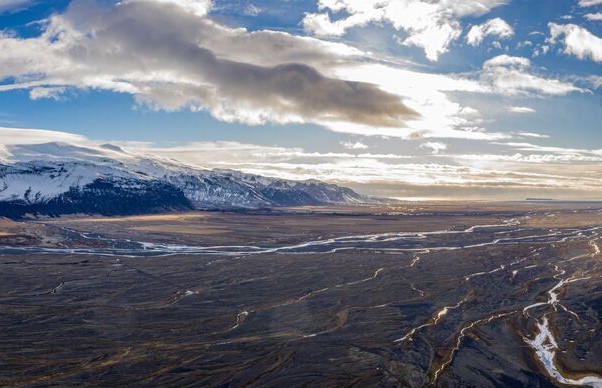Skeiðarársandur is a large area of black sands, reaching from Skeiðarárjökull (a part of Vatnajökull) and to the sea. It covers an area of 1300 km² and was formed as the glacial rivers in the area washed material towards the sea. The rivers bring forth material that surfaced during sub-glacial volcanic eruptions in Vatnajökull. Near the glacier the ground is gravelly and even rocky and as it reaches the sea it has turned into sand and clay. There used to be little vegetation to be found on Skeiðarársandur, but in the past decade a self-sprouted forest of birch trees has been growing lushly in the middle of the area. Skeiðarársandur is a large nesting area for the great skua.
Skeiðarárbrú
Skeiðarárbrú is the name of the bridge that crosses Skeiðará river on Skeiðarársandur, and it´s opening in 1974 marked the opening of the ring road in Iceland. Skeiðarárbrú is a one-lane bridge made of specifically engineered steel trusses. In 1996 there was a volcanic eruption in Grímsvötn in Skeiðarárjökull which created massive floods and glacier melting. The bridge was severely damaged by the hefty amount of flood waters and house-sized icebergs. All that remains of the original bridge today are two twisted girders by the side of the new road. They form a unique monument to the lovely but powerful beauty of Iceland’s natural landscape. Now the bridge has been replaced with a new one, due to changes in the water flow from underneath the glacier. The river flowing under the new bridge is called Morsá.

